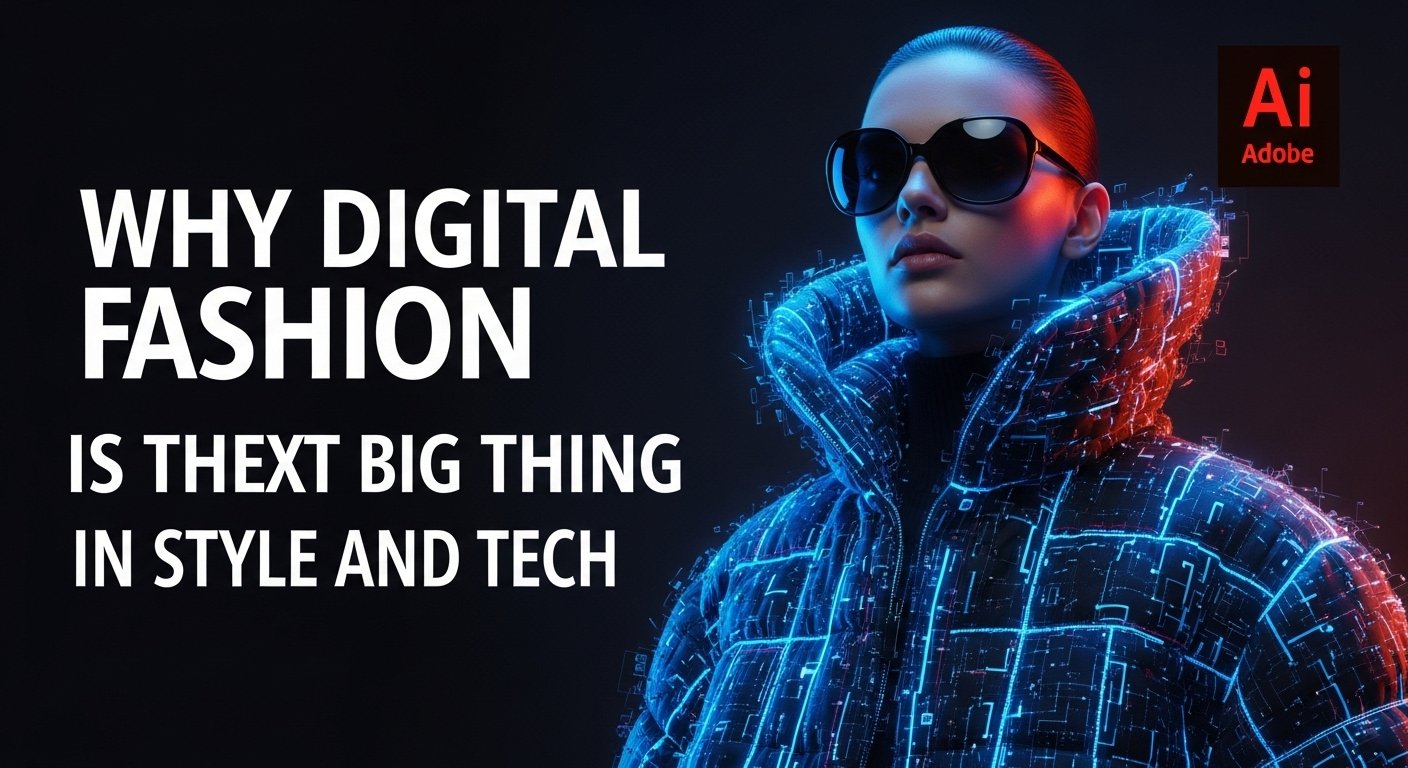Table of Contents
I remember a few years ago, scrolling through my feed. I saw avatars in futuristic sneakers and neon jackets that weren’t available in stores. There were filters overlaying unreal fabrics. I thought that maybe fashion was moving in a completely different direction. What once seemed like quirky sci-fi is now one of the fastest-growing areas where style meets technology. Digital fashion is no longer just for avatars or online games; it’s changing how we design, buy, express ourselves, and even think about our identities.
The Shift From Physical to Digital and Why It Matters
Fashion has always meant more than just wearing clothes. It’s about identity, status, and belonging. In the physical world, clothing comes with limits like cost, production, shipping, and waste. Digital fashion removes many of those boundaries.
Imagine:
- Owning a piece that exists only in a virtual space but feels exclusive, collectible, and interchangeable across platforms.
- Trying on an outfit in augmented reality before buying it, or dressing your avatar for a virtual party.
- Brands are releasing digital-only collections alongside physical ones, sometimes even before.
Recent trends prove it’s not just a niche anymore. Virtual clothing for avatars is becoming popular. AR try-ons, avatar fashion on social media, and virtual drops are all growing rapidly.
This shift is important because it changes what consumers expect. People want personalized experiences, speed, fun, and less waste. They want to try new things without high costs. Digital fashion provides that.
Innovation Driving the Boom

Augmented Reality & Virtual Try-On: Stores and online brands use AR so customers can see how clothes move on their own body or a digital twin before buying. This reduces returns and builds confidence.
AI & Generative Design: Designers utilize AI to create new styles, colors, and even entire garment shapes from prompts. Fashion weeks have showcased collections that combine generative elements with tech-textile fusions.
Phygital Fashion: This merges physical and digital fashion. Imagine buying a leather jacket and receiving a digital version for your avatar. Some items even have NFC chips or QR codes to verify authenticity or unlock virtual experiences.
Sustainability & Lower Barriers to Entry: Digital fashion helps cut waste: fewer samples, less overproduction, and no shipping. Creators with limited resources can design garments, reach global audiences, and experiment without the heavy costs of traditional fashion production.
Community, Status, and Culture in Virtual Spaces: Like physical fashion, digital fashion fosters a sense of community. Owning certain pieces and participating in digital drops or styling avatars builds identity and connection in online environments. Younger audiences, especially Gen Z and Gen Alpha, are embracing this change.
How You Can Dip In Without Going Full Sci-Fi

If all this sounds futuristic, the good news is that you can start experimenting now in simple ways:
- Try digital try-ons through apps or retail sites to see how an outfit might look before you commit.
- Explore avatar fashion in gaming or social media spaces to play with your digital identity.
- Partner with digital creators to design unique garments, mockups, or virtual events.
- With Adobe’s tools, you can customize or create logos for clothing that connect your real and digital presence.
- Choose platforms that focus on sustainability with their digital fashion drops.
Real-Life Examples That Inspire
Some fashion brands already offer limited-edition digital wearables linked to physical items. For instance, a sneaker launch may include both a real-world pair and a digital version for avatars.
Independent designers are also innovating. One recently created a digital cloak that changes with the time of day, glowing at dusk and shifting colors at night. While it isn’t physically real, it holds significance for those who live part of their lives online.
Communities are forming around digital fashion, from Instagram filters to shared avatar challenges. The social experience is proving just as impactful as the clothing itself.
What to Watch Out For
Digital fashion comes with challenges:
- Authenticity and ownership: Proving the originality of digital items can be difficult, though blockchain technology offers a potential solution.
- Technical barriers: Not everyone has access to advanced AR tools or high-speed internet.
- Environmental concerns: While it reduces fabric waste, digital assets still require energy and storage.
- Aesthetic hurdles: Many digital designs are flashy; making them relatable for daily use is still a work in progress.
Where This Is Going
Digital fashion will soon feel as ordinary as online shopping. Wardrobes may blend physical items with digital ones for gaming, streaming, and virtual socializing. Designers are already creating collections for avatars first, and tech brands are developing tools to make personalization available to everyone.
This isn’t just a novelty; it’s an evolution. We’re entering a world where style isn’t confined to fabric but extends across various realities.
Conclusion
Digital fashion isn’t a gimmick. It offers a new way to express creativity, sustainability, and global connection. If you’re curious, now is a great time to explore. Try a digital outfit, follow designers who are pushing boundaries, and think about how your virtual identity impacts your wardrobe.
Before long, your digital closet may feel just as essential as the one in your bedroom.
FAQs
1. What is digital fashion?
Digital fashion refers to clothing and accessories that exist only in digital form, designed for avatars, virtual spaces, or augmented reality filters.
2. How is digital fashion used in real life?
It can be worn virtually on social media, in games, or tried on through AR apps before purchasing physical clothes.
3. Is digital fashion sustainable?
Yes. It reduces the need for physical samples, shipping, and overproduction, though creators should still consider the energy costs of digital assets.
4. Who buys digital fashion?
Gen Z and Gen Alpha lead the way, but brands see increasing interest from influencers, creators, and professionals looking for unique digital self-expression.
5. Will digital fashion replace physical clothing?
Not likely. Instead, it complements physical fashion by expanding how people express their identities both online and offline.

